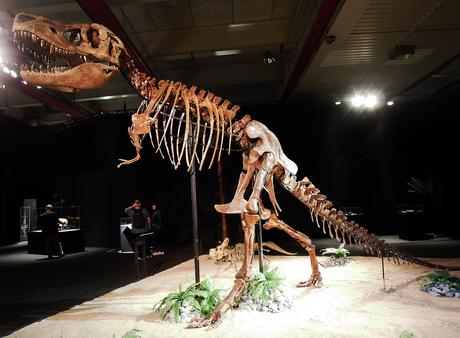 A large team of paleontologists, geologists, archeologists, scientists, and explorers has made some groundbreaking finds in the Gobi Desert of Mongolia. The team, which operated under the Institute of Paleontology and Geology of Mongolian Academy of Sciences (IPG) and the Explorers Club Hong Kong Chapter, spent 20 days in the desert following a revised version of the same route taken by famed explorer Roy Chapman Andrews nearly a century ago. In doing so, they uncovered some unique fossils and discovered as many as three new species of dinosaurs along the way.
A large team of paleontologists, geologists, archeologists, scientists, and explorers has made some groundbreaking finds in the Gobi Desert of Mongolia. The team, which operated under the Institute of Paleontology and Geology of Mongolian Academy of Sciences (IPG) and the Explorers Club Hong Kong Chapter, spent 20 days in the desert following a revised version of the same route taken by famed explorer Roy Chapman Andrews nearly a century ago. In doing so, they uncovered some unique fossils and discovered as many as three new species of dinosaurs along the way.While three weeks on a paleontology dig in the Gobi Desert may not seem like a long time, the team made the most of their days in the field. Over that period they uncovered more than 250 fossil locations, including five that were previously altogether unknown. At those sites they discovered hundreds of fossilized bones, including those of mammals that weren't previously known to have existed in the present day location of the Gobi.
Among the key finds were the leg of an ostrich-like dinosaur believed to be over 65 million years old, an intact turtle fossils from 70 million years ago, and the tooth of a tarbosaurus that measured more than 10 cm (4 inches) in length. The tarbosaur is believed to be one of the largest carnivorous dinos to ever wander this region, measuring some 8 meters (26 feet) in length, standing 5 meters (16 feet) in height, and weighing more than six tons.
The first site on the expedition's hit list was also the first explored by Roy Chapman Andrews back in 1922. Andrews was an explorer who led expeditions for the American Museum of Natural History, with his adventures in the Gobi being most memorable and dramatic. From 1922 to 1930 he explored the desert using some of the first motorized vehicles in Mongolia, with support from large camel caravans. Along the way, he made major discoveries regarding the dinosaurs that once wandered the area, uncovering hundreds of fossils and revealing new species.
This modern-day version of Andrews' expedition found similar success. The three potential new species that the 35-person team uncovered have been sent back to Ulaanbaatar to be validated and studied in detail. Their find alone has given researchers plenty to study for weeks to come, while the newly found sites will likely yield new discoveries for months and possibly years more.
“Geological and paleontological maps will be re-written to account for these new findings and discoveries,” said expedition organizer Michael Barth, Founder and Chairman of The Explorers Club Hong Kong Chapter. “New species and mammals were found, we pioneered new means to pinpoint locations, and uncovered fossils from three unknown species. The quality and historical significance of the findings far exceeded our expectations. We found hundreds of fossils and the first Velociraptor ancestor fossil at a new site in the Oosh mountain range, which is the first evidence of a meat-eating dinosaur to be found in this area."
Barth went on to add, "We found the ancestor of the great horned rhino, which has never been seen before in this region. We also found an exceedingly rare Theropod dinosaur egg and massive vertebrae, ribs, skull fragments and the tail section from a Tarbosaurus, the Mongolian cousin of the T.rex. Partnering with INFINITI was a good match with the Hong Kong Chapter of The Explorers Club, as we share a passion for exploration and using technology to push the boundaries of seeking new knowledge. Roy Chapman Andrews was the first explorer to use motorized vehicles to increase the amount of ground he and his team could cover. He would be proud of what we accomplished, and thrilled that his legacy continues to inspire meaningful discoveries.”
The expedition carried Explorers Club flag #179 along with it on the journey, the 36th such expedition for that flag, which as been to both the North Pole and the summit of Everest. As you no doubt already know, the EC has roughly 200 flags that it loans out to explorers and adventurers who the club deems worthy of carrying one with them as they head out into the field.
Congrats to this entire team for such a successful foray into the Gobi. It is remarkable that there still so many amazing things to be found out there, nearly a hundred years after Andrews' groundbreaking expeditions to the same region.

